I want to use rmarkdown to make a table where each cell has two values, for example 3.1 (0.05) or 78 ± 23.3. These kinds of tables are pretty common in scientific literature (like ones with bold values), where we want to compactly show mean and standard deviation, or a value plus-minus some error term. So it would be useful to have a simple way to produce them when using Rmarkdown. For example:
# my table
mtcars
mpg cyl disp hp drat wt qsec vs am gear carb
Mazda RX4 21.0 6 160.0 110 3.90 2.620 16.46 0 1 4 4
Mazda RX4 Wag 21.0 6 160.0 110 3.90 2.875 17.02 0 1 4 4
Datsun 710 22.8 4 108.0 93 3.85 2.320 18.61 1 1 4 1
Hornet 4 Drive 21.4 6 258.0 110 3.08 3.215 19.44 1 0 3 1
Hornet Sportabout 18.7 8 360.0 175 3.15 3.440 17.02 0 0 3 2
Valiant 18.1 6 225.0 105 2.76 3.460 20.22 1 0 3 1
Duster 360 14.3 8 360.0 245 3.21 3.570 15.84 0 0 3 4
Merc 240D 24.4 4 146.7 62 3.69 3.190 20.00 1 0 4 2
[snipped]
# my other table, that I want to combine with the first
some_error_term_for_mtcars <- data.frame(sapply(1:ncol(mtcars), function(i) sample(x = (min(mtcars[, i])/10):max(mtcars[, i])/10, nrow(mtcars), replace = TRUE)))
some_error_term_for_mtcars
X1 X2 X3 X4 X5 X6 X7 X8 X9 X10 X11
1 2.704 0.44 26.011 3.92 0.4276 0.21513 1.145 0.0 0.0 0.03 0.41
2 0.604 0.44 5.211 6.32 0.0276 0.01513 1.345 0.1 0.1 0.33 0.21
3 3.304 0.14 31.511 20.42 0.1276 0.51513 0.145 0.1 0.0 0.43 0.71
4 1.004 0.44 16.011 26.02 0.2276 0.11513 1.345 0.1 0.0 0.03 0.31
5 2.604 0.34 4.311 30.02 0.0276 0.31513 1.745 0.1 0.1 0.23 0.41
6 2.404 0.64 8.011 27.92 0.1276 0.21513 1.145 0.0 0.1 0.33 0.41
7 2.804 0.14 4.811 14.92 0.1276 0.01513 0.345 0.1 0.0 0.13 0.31
[snipped]
What is the simplest way to combine these two tables in rmarkdown to produce a single where a single cells can contain things like 21 (0.904) or 21 ± 0.904?

